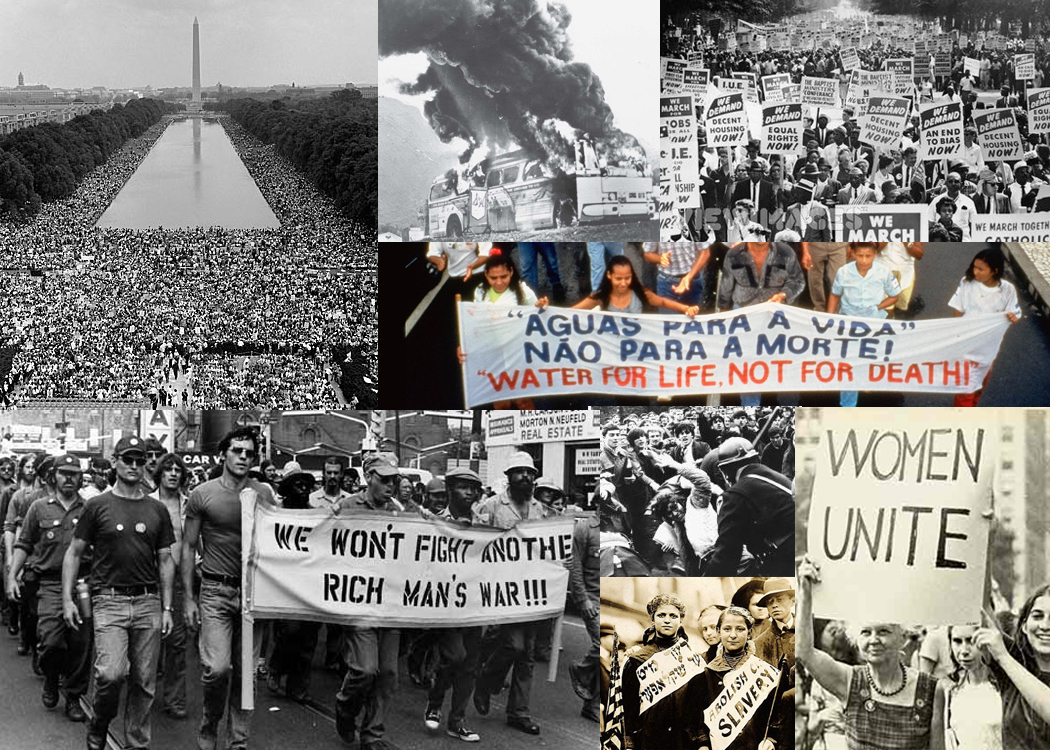Essay on the Types of Social Movements – Sociologists classified social movements into different types on the basis of their objectives. Wallace and Wallace, Horton and Hunt, M.S. Rao, and others have mentioned of three main types of movements:
1. Reform Movements:
Reform movements are satisfied with the existing social order but believe that certain reforms are necessary in some specific areas. The reformers endeavour to change elements of the system as it currently stands.
ADVERTISEMENTS:
Example:
The Civil Rights Movement, Women’s Liberation Movement, Save the Environment Movement, the Arya Samaj Movement, Brahmo Samaj Movement, etc.
2. Revolutionary Movements:
ADVERTISEMENTS:
The revolutionary movements deny that the system will even work. These movements are deeply dissatisfied with the social order and work for radical change. They advocate replacing the entire existing structure. Their objective is the reorganisation of society in accordance with their own ideological blueprint. Revolutionary movements generally prefer not to use violence although some of them do resort to violence.
Example:
The Protestant Reformation Movement, the Socialist Movement, the Communist Revolution of Russia and also of China, the Indian National Freedom Movement, and so on.
3. Reactionary or Revivalist Movement:
ADVERTISEMENTS:
Some movements are known as reactionary or regressive movements. These aim at “putting the clock back”. Their members view certain social changes with suspicion and distaste and try to reverse the current trends.
They highlight the importance and greatness of traditional values, ideologies and institutional arrangements. They strongly criticise the fast moving changes of the present.
Example:
The Catholic Counter Reformation, The Brahmo Samaj, Arya Samaj, The Sarvodaya Movement, “Khadi and Gramodyog Movement of Gandhiji, and the like.
In addition to the above, mentioned three main types of movements, we can add two other types of movements as suggested by Horton and Hunt.
4. Resistance Movements:
These movements are formed to resist a change that is already taking place in society. The many social and cultural changes of recent decades have been profoundly disturbing to many of the Indians who feel that our national virtues, traditional values, and cultural greatness, are being eroded by Secularism, minority appeasement, sexual permissiveness, moral degradation, political corruption and sell-out of national interests for the partial political interests, and so on. Good number of contemporary resistance movements expresses their dismay at the directions in which our nation has been moving.
Example:
Anti-Abortion Movement, Anti-Hindi Movement, Anti-Reservation Movement, the ‘Swadeshi Movement against the movement towards Economic Liberalisation, the Movement towards indianising Indian Education, etc. This type of movement is not very much revolutionary in character, but more resistant in nature.
5. Utopian Movements:
These are attempts to take the society or at least a section of it towards a state of perfection. “These are loosely structured collectivities that envision a radically changed and blissful state, either on a large scale at some time in the future or on a smaller scale in the present. The Utopian ideal and the means often are often vague, but many Utopian movements have quite specific programmes for social change”. (I. Robertson)
Examples:
The “Hare Krishna Movement” of the seventies, the movement towards the establishment of “Rama Rajya”— as envisioned by the B.J.P. and the “Sangh Parivar” (The community of the supporters of the R.S.S. School of Thought), the Communists’ and Socialists pronouncement of a movement towards the classless, casteless society free from all kinds of exploitation, etc.

